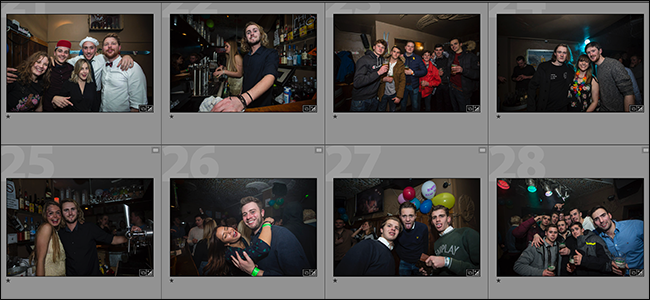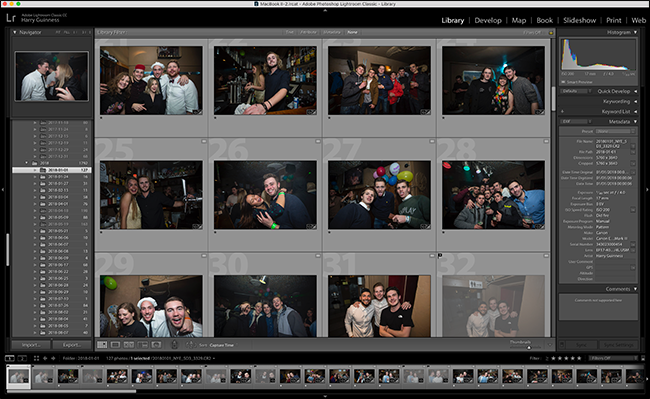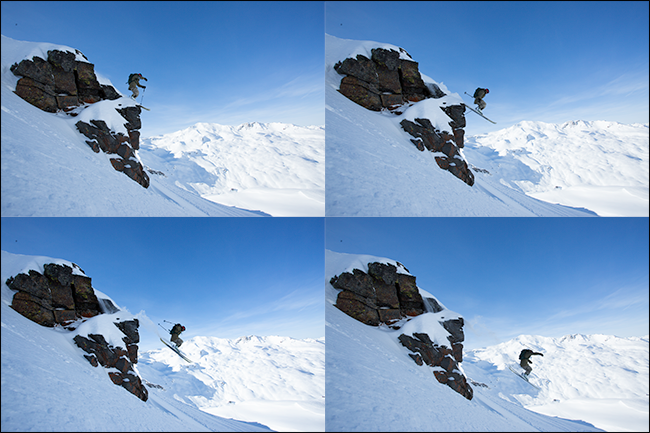Quick Links
RAW images contain a lot more data than JPEGs. If you're using a DSLR or mirrorless camera, you should be shooting with RAW most of the time---it makes the most of what your camera is capable. You can even shoot RAW on your iPhone. There are, however, a few situations when you don't need to shoot---or even shouldn't shoot---RAW.
If the Photos Don't Matter or You Want to Be Able to Share Them Quickly
Occasionally I'll get roped into taking photos at a Christmas party or family event. These aren't high-quality portraits; they're just snapshots of---normally, drunk---people. The only reason I'm asked is that people know I have a good camera. Once you get a reputation as a photographer, this will almost certainly happen to you.
When I get badgered into one of these events, my go-to is to set my camera in aperture priority mode, put a flash on my camera if it's needed, and then wander around doing my own thing, occasionally shooting photos. It's one of the few times I deliberately shoot JPEG because it means that at the end of the night, I can drag all the photos into a Dropbox (or whatever) folder without even looking at them, and send them on to the organizer. They get all the photos, and I don't have to spend a few hours working with them in Lightroom.
When You're Shooting Lots of Bursts
When you shoot a burst with your camera, all the images get saved to a buffer before being written to the storage card. The size of this buffer is one of the main things that limit how long you can shoot a burst. Since JPEGs are much smaller than RAW files, most cameras can store more JPEGs in their buffer and thus shoot longer bursts.
For example, my Canon 5DIII can shoot six RAW or JPEG shots per second. The buffer can only hold 18 RAW photos, which means I get a three-second burst at full speed before it starts to slow down. It can, however, hold 64 JPEG images: that's a full ten seconds of continuous shooting.
Whenever I'm shooting sports games or other situations where I want to be able to crank out lots of fast bursts, I switch to JPEG. Sometimes it's more important to get the shot rather than to get a high-quality photo of nothing.
When You're Shooting a Time Lapse
Time lapses---those fast motion videos that compress one hour, one day, or even longer down to a watchable YouTube length---require a massive number of photos. The most common format is 24 fps so, for every second of footage, you need to take 24 photos. That means a two and a half minute time-lapse video is made up of 3,360 photos.
Some time lapse photographers shoot in RAW, but it creates a tremendous amount of work and, more importantly, requires a seriously powerful computer. Most laptops aren't up to the task of crunching that much data. (At 25 MB per RAW file, that short time lapse has over 80 GB of data in it).
The simplest thing, if you're just starting, is to get your exposure right on location and shoot JPEGs. Your computer will thank you for it.
There used to be one other reason not to shoot RAW---when storage space was at a premium---but that doesn't matter so much anymore: good SD cards now cost between $10 and $30. Outside of the situations above, you should shoot in RAW by default.



